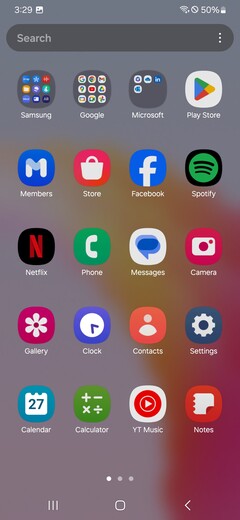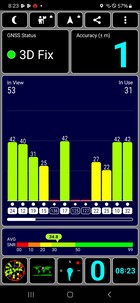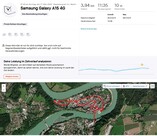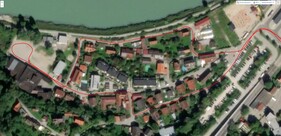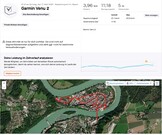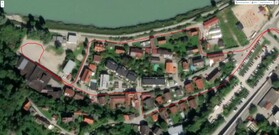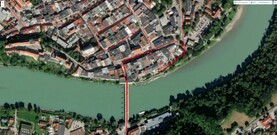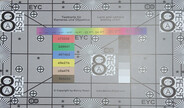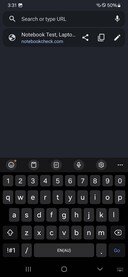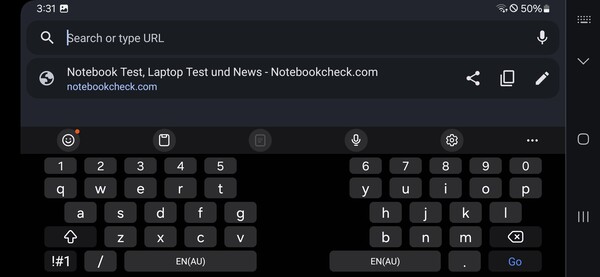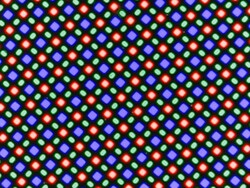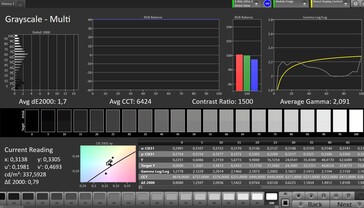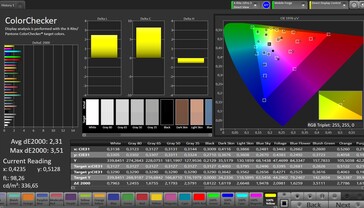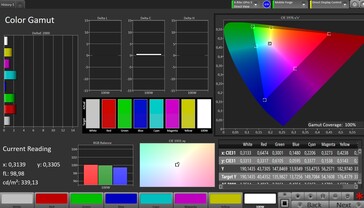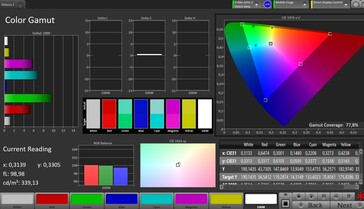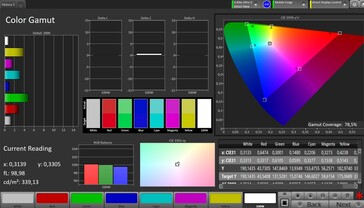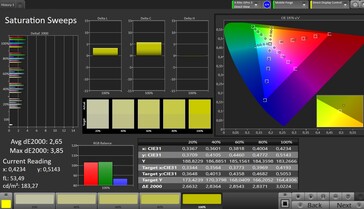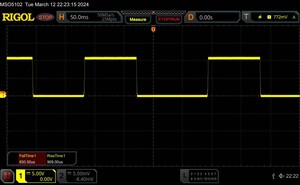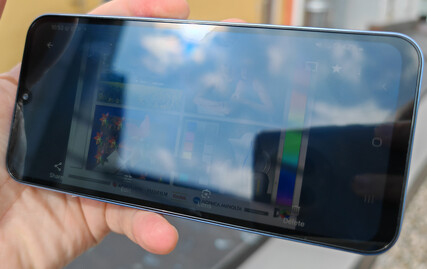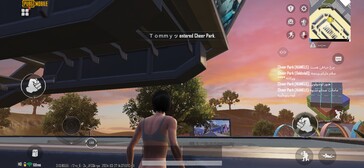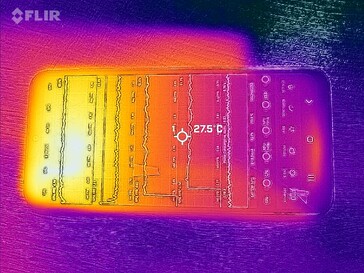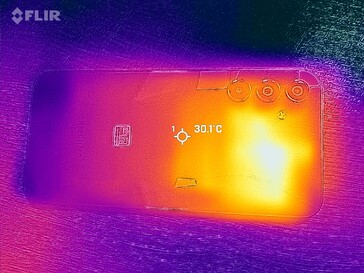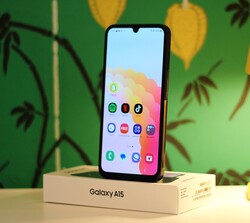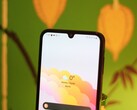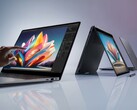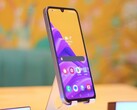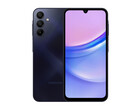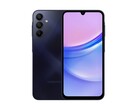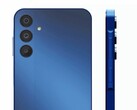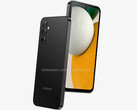Samsung Galaxy A15 4G smartphone review – A lot of capabilities for daily use at a low cost
Affordable smartphones are favored and can handle more and more tasks. A contributing factor is the intense competition in this price range, since both smaller manufacturers of affordable smartphones as well as large brands that cover the whole spectrum are active here. Samsung belongs to the latter. We already tested the Galaxy A15 5G and found it to be a great update. Now we are taking a closer look at the LTE version of the Galaxy A15 that allows you to save another few dozen Euros.
The Galaxy A15 4G doesn't lack any equipment as well: a lot of storage, a bright and fairly fast AMOLED screen, and high load speeds are included in the highlights. We begin our extensive review to find out in detail what the affordable Galaxy can really do.
Possible Competitors in Comparison
Rating | Date | Model | Weight | Drive | Size | Resolution | Best Price |
|---|---|---|---|---|---|---|---|
| 80 % | 04/2024 | Samsung Galaxy A15 Helio G99, Mali-G57 MP2 | 200 g | 128 GB UFS 2.2 Flash | 6.50" | 2340x1080 | |
| 80.2 % | 02/2024 | Xiaomi Redmi Note 13 4G SD 685, Adreno 610 | 188.5 g | 128 GB UFS 2.2 Flash | 6.67" | 2400x1080 | |
| 75.9 % | 07/2023 | Samsung Galaxy A14 LTE Helio G80, Mali-G52 MP2 | 201 g | 64 GB eMMC Flash | 6.60" | 2408x1080 | |
| 78.7 % | 05/2023 | Nokia G22 T606, Mali-G57 MP1 | 195 g | 64 GB UFS 2.2 Flash | 6.52" | 1600x720 | |
| 80.7 % | 10/2023 | Motorola Moto G54 Dimensity 7020, IMG BXM-8-256 | 177 g | 256 GB UFS 3.0 Flash | 6.50" | 2400x1080 |
Case – Elegant plastic
If you place the Galaxy A15 4G and the 5G model next to each other, you won't see any external difference, since both smartphones are using the exact same case. So those who are looking for one specific version should be very careful in the store, since the Galaxy A15 4G can only be recognized by a very small sticker on the back with the model number A155F.
As with the sibling model, you get a plastic case. In our test unit, the back is night blue this time. The high-gloss surface shimmers in the light, so fingerprints are a frequent problem. The model is also available in a lighter blue color or in pastel yellow, which is the most daring of the three color versions.
The bezels around the front screen are fairly wide, while some of the competitors such as the Xiaomi Redmi Note 13 4G or the Moto G54 are already showing a more modern appearance in this regard.
The case of the smartphone is robust and shows good workmanship, even though it produces some slight creaking noises when we apply some pressure by trying to twist it, for example.
Equipment – More storage and NFC
There is a storage upgrade compared to the Galaxy A14 LTE predecessor, changing from 64 GB of slow eMMC Flash to the faster 128 GB UFS 2.2 storage. You continue to have to make do with 4GB of RAM, though.
In addition, there are most of the connections you would need in everyday use: a USB-C port with USB 2.0 speed for charging and data transfer, an NFC connection for wireless payment services for example, a 3.5mm audio port, and the modern Bluetooth 5.3.
Unfortunately, there is still no support for virtual SIM cards called eSIM. The Motorola Moto G54 is better equipped in this regard.
microSD Card Reader
Even though there are two SIM slots, if you also want to insert a microSD card, you have to use one of the two slots for this. The microSD card can be used for storage expansion or also for transferring data between devices.
We evaluate the speeds that are reached by the card reader using our Angelbird V60 reference card and are satisfied: 42.6 MB/s in the copy test is a very good value that is higher than that of most comparison devices. With this, the card reader accomplishes fairly fast data transfers, although it is still unable to make use of the full potential of the microSD card from Angelbird in terms of the transfer rates.
| SD Card Reader - average JPG Copy Test (av. of 3 runs) | |
| Samsung Galaxy A14 LTE (Angelbird AV Pro V60) | |
| Samsung Galaxy A15 (Angelbird V60) | |
| Motorola Moto G54 (Angelbird V60) | |
| Xiaomi Redmi Note 13 4G (Angelbird V60) | |
| Nokia G22 (Angelbird V60) | |
Cross Platform Disk Test (CPDT)
Software – Galaxy smartphone with the promise of long update periods
The smartphone uses Android 14 with Samsung's own OneUI 6.1 user interface. There are many preinstalled apps, most of them from Samsung itself, but there are also some third-party advertising apps. Most of these can be uninstalled fairly easily, though. Some of the Samsung apps also double the functions that are offered by Google's preinstalled apps.
Thanks to an L1 certification for Google's Widevine digital rights management, you can enjoy streaming movies from the large services in full quality.
In terms of update periods, the manufacturer promises very long times with up to 5 years of security updates, so up to 2029, and up to 4 generations of Android, which would be Android 18. However, we also have to note that with the addition of the "up to" wording in this promise, things could also change, which is a significant limitation of this update guarantee. We can only hope that Samsung wouldn't want to risk a PR nightmare by breaking their promise.
In our test unit, the security patches are from January 1, 2024, which at the time of this test is still within the 3-month time frame that Samsung also promises. But to remain within this time frame, the next update should happen very soon.
Communication and GNSS – Connectivity suitable for everyday use
The fastest standard in which the Samsung Galaxy A15 4G is able to access the Internet via WLAN is WiFi 5. The class typical access speeds of 300 - 350 Mbit/s are basically reached, and the smartphone is only minimally slower than comparable devices when receiving data.
Close to the router, it still takes several seconds until images on large websites are loaded. At a 10m (~33 ft) distance and through 3 walls, we still get about half the signal strength with the smartphone, and websites load correspondingly slower.
Our test unit supports the necessary frequency bands to access the Internet via the mobile networks in Central Europe. But more than those aren't supported, and you should check beforehand whether the necessary LTE frequencies are supported if you travel to other countries and want to access the mobile Internet there. You can check some tables on the Internet (for example here in the Wikipedia) and compare them with the specs of the smartphone, which you can find above in this article.
In some spot checks during our approximately two-week-long test, the reception is unable to keep up with that of high-end devices from Apple or Honor. While the Galaxy A15 LTE succeeds in getting a signal wherever the other devices also have reception, the signal is often a bit weaker.
| Networking | |
| Samsung Galaxy A15 | |
| iperf3 receive AXE11000 |
|
| iperf3 transmit AXE11000 |
|
| Xiaomi Redmi Note 13 4G | |
| iperf3 receive AXE11000 |
|
| iperf3 transmit AXE11000 |
|
| Samsung Galaxy A14 LTE | |
| iperf3 receive AXE11000 |
|
| iperf3 transmit AXE11000 |
|
| Nokia G22 | |
| iperf3 receive AXE11000 |
|
| iperf3 transmit AXE11000 |
|
| Motorola Moto G54 | |
| iperf3 receive AXE11000 |
|
| iperf3 transmit AXE11000 |
|
| Average of class Smartphone | |
| iperf3 receive AXE11000 |
|
| iperf3 transmit AXE11000 |
|
To determine its location, the Samsung smartphone uses all the large satellite networks and SBAS for more exact locating. This allows it to reach a good accuracy of up to 1m (~3 ft) outdoors.
To find out more how the smartphone will fare in locating itself in practice, for example when using it as a navigation device, we take it on a bike tour, also taking the Garmin Venu 2 smartwatch, which is known for its high accuracy.
As a result, we find that the Galaxy A15 4G is also able to locate us relatively accurately on the routes we take. However, it generally does better in open areas than in the narrow alleys of the old town, where it often creates some slight detours, showing us riding through houses or almost falling into the river.
Generally, the Galaxy A15 4G can also be recommended for navigation, particularly if you travel through less built-up areas. But there will still be some slight inaccuracies from time to time, and those who need absolute accuracy should look for another device.
Telephone Functions and Voice Quality – Noises are present
While Samsung uses its own inhouse app for making phone calls, you can also install other phone apps without any trouble and set them as the default.
The voice quality using the earpiece is loud and fairly clear, but our conversation partner sounds slightly dull. The microphone does a good job recording our own voice without any distortions, although the owner of the Galaxy A15 4G shouldn't talk too quietly. Using the speaker mode, you can also make calls with a high volume. While the microphone is able to record our voice clearly as long as we don't talk too quietly, annoying background noises are hardly filtered out.
Cameras – Flexible camera system
We already know the camera setup from our test of the Galaxy A15 5G: The 50-Megapixel main camera in the LTE model also takes decent pictures for the price class. For example, the dramatic sky in our photo of the surroundings is depicted with some amount of detail. However, the sharpness delivered by the camera is only mediocre.
Even though the camera produces a good overall brightness under low-light conditions, the remaining bright areas of the image are then too bright and details are lost.
Similarly affordable smartphones only rarely include a wide-angle camera anymore, but the Galaxy A15 4G does include it. At 5 Megapixels, the resolution isn't very high, and as we already saw in the 5G model, the viewing angle isn't very large compared to other smartphones. The lens is suitable for snap shots, making the camera system slightly more flexible overall. But you shouldn't enlarge the pictures too much, since details are hardly recognizable.
You can also find a macro camera with a 2 Megapixel resolution on the back, which you can use for extreme closeups. While the resolution of the sensor is very low, it is still sufficient for viewing the image on the smartphone display.
Videos can be recorded at a maximum of 1080p and 30 fps. You have to choose between the ultrawide angle lens and the main camera before starting the recording, since this is not possible anymore during the recording. The image quality is solid overall, and the auto-focus and brightness adjustment work fairly quickly and are continuously variable.
The front camera is able to take selfies at a maximum of 13 Megapixels, which look fairly sharp overall and can also be enlarged easily. However, even in good light conditions, there are no recognizable details in dark areas anymore.
Image Comparison
Choose a scene and navigate within the first image. One click changes the position on touchscreens. One click on the zoomed-in image opens the original in a new window. The first image shows the scaled photograph of the test device.
Main Camera: PlantMain Camera: SurroundingsMain Camera: Low LightWideangle CameraWe can exactly control the light conditions in our studio and test the main camera again here. Our test chart appears with a low sharpness and also misses some contrast. At only 1 Lux of remaining light, the object is hardly recognizable anymore.
The color reproduction looks poor in contrast overall.
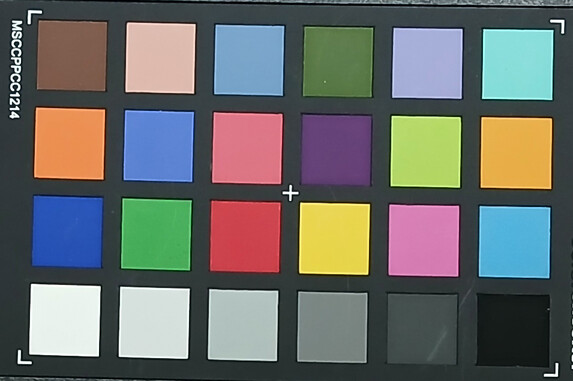
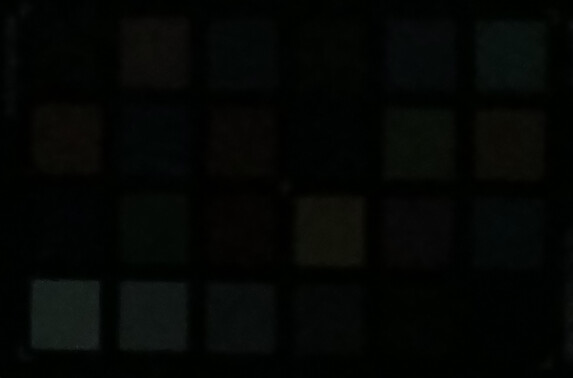
Accessories and Warranty – The charger has to be purchased extra
The manufacturer doesn't include a charger, and the box only includes a USB cable, a SIM tool, and the most important papers. You can buy the corresponding 25-Watt charger from the manufacturer's online shop on Amazon for ~$15.
There is a 24-month warranty for Samsung smartphones if purchased in the EU. The manufacturer offers numerous repair options such as a mobile service team or repair centers in many large cities.
Input Devices and Operation – Fast fingerprint sensor
The 90-Hz display makes the touch screen operation a bit smoother, since the display responds faster to inputs. In addition, movements look sharper, allowing you to still recognize the details when scrolling quickly.
On the right side of the case are the physical keys, which consist of the standby key and a volume rocker. They can be felt easily with the finger and are placed ergonomically also for lefthanded users. A fingerprint reader is integrated into the standby key. It responds reliably, unlocking the smartphone without any delays.
Face recognition is also available as a biometric method to unlock the smartphone, and it also works reliably in good light conditions. In dark surroundings, the reflected light from the display is sufficient to identify the face, although unlocking works even better in such situations if you use the fingerprint sensor.
Display – AMOLED Display with good brightness and 90 Hz
Although an AMOLED display is not a given in this price class, Samsung still decided to use one in the Galaxy A15 4G, thus offering a good argument for purchase. With a resolution of 2340x1.080 pixels, a refresh rate of 90 Hz, and our measurement of an average maximum brightness of 711 cd/m², the panel would also be well-suited for a more expensive smartphone.
The brightness isn't quite sufficient for perfectly displaying HDR content. However, in smaller areas a slightly higher brightness is still possible, as our test with the spectral photometer and the CalMAN software shows. In any case, you get an attractive display with vibrant colors and good contrasts.
| |||||||||||||||||||||||||
Brightness Distribution: 93 %
Center on Battery: 731 cd/m²
Contrast: ∞:1 (Black: 0 cd/m²)
ΔE Color 2.31 | 0.5-29.43 Ø5
ΔE Greyscale 1.7 | 0.57-98 Ø5.3
100% sRGB (Calman 2D)
Gamma: 2.091
| Samsung Galaxy A15 Super AMOLED, 2340x1080, 6.50 | Xiaomi Redmi Note 13 4G AMOLED, 2400x1080, 6.67 | Samsung Galaxy A14 LTE PLS, 2408x1080, 6.60 | Nokia G22 IPS, 1600x720, 6.52 | Motorola Moto G54 IPS, 2400x1080, 6.50 | |
|---|---|---|---|---|---|
| Screen | 27% | -215% | -71% | -62% | |
| Brightness middle | 731 | 940 29% | 465 -36% | 674 -8% | 492 -33% |
| Brightness | 711 | 922 30% | 439 -38% | 641 -10% | 470 -34% |
| Brightness Distribution | 93 | 96 3% | 89 -4% | 90 -3% | 90 -3% |
| Black Level * | 0.47 | 0.43 | 0.3 | ||
| Colorchecker dE 2000 * | 2.31 | 1.2 48% | 8.5 -268% | 4.45 -93% | 3.9 -69% |
| Colorchecker dE 2000 max. * | 3.51 | 2.28 35% | 15.8 -350% | 7.41 -111% | 6.26 -78% |
| Greyscale dE 2000 * | 1.7 | 1.4 18% | 11.8 -594% | 5.1 -200% | 4.3 -153% |
| Gamma | 2.091 105% | 2.27 97% | 2.2 100% | 2.072 106% | 2.275 97% |
| CCT | 6424 101% | 6503 100% | 10757 60% | 7799 83% | 7656 85% |
| Contrast | 989 | 1567 | 1640 |
* ... smaller is better
Screen Flickering / PWM (Pulse-Width Modulation)
| Screen flickering / PWM detected | 187 Hz | ||
The display backlight flickers at 187 Hz (worst case, e.g., utilizing PWM) . The frequency of 187 Hz is relatively low, so sensitive users will likely notice flickering and experience eyestrain at the stated brightness setting and below. In comparison: 53 % of all tested devices do not use PWM to dim the display. If PWM was detected, an average of 17844 (minimum: 5 - maximum: 3846000) Hz was measured. | |||
Measurement series at a fixed zoom level with various brightness settings
In our test, we also measure some flickering with a frequency of 187 Hz at very low brightness levels. Since it is very difficult to dim OLED diodes, many manufacturers use PWM (which is switching off the diodes for a short time) to simulate a lower brightness to the eyes. However, this might lead to some problems such as headaches for some people. Users that are sensitive to this should therefore try out the display for themselves before purchasing the smartphone.
The color reproduction is fairly accurate in the "Natural" mode, with only bright green and blue color tones deviating slightly from the target values. With this, the display can still be used for professional work.
Display Response Times
| ↔ Response Time Black to White | ||
|---|---|---|
| 1.7 ms ... rise ↗ and fall ↘ combined | ↗ 0.8 ms rise | |
| ↘ 0.9 ms fall | ||
| The screen shows very fast response rates in our tests and should be very well suited for fast-paced gaming. In comparison, all tested devices range from 0.1 (minimum) to 240 (maximum) ms. » 5 % of all devices are better. This means that the measured response time is better than the average of all tested devices (21.5 ms). | ||
| ↔ Response Time 50% Grey to 80% Grey | ||
| 2 ms ... rise ↗ and fall ↘ combined | ↗ 1 ms rise | |
| ↘ 1 ms fall | ||
| The screen shows very fast response rates in our tests and should be very well suited for fast-paced gaming. In comparison, all tested devices range from 0.2 (minimum) to 636 (maximum) ms. » 5 % of all devices are better. This means that the measured response time is better than the average of all tested devices (33.7 ms). | ||
Outdoors, the good brightness of the display is often sufficient to still keep the contents readable even with some strong reflections. But working in the shade still feels much more comfortable.
There are no complaints about the viewing angles. Even when looking at the display from the side, you can still see its contents without any distortions.
Performance – Stutters cannot be not ruled out
The MediaTek Helio G99 is an SoC from 2022 that was originally used in some more expensive devices. Now the Galaxy A15 4G is also using it as its engine, reaching some good performance values for its price class. Our test unit even offers slightly more power with it than the 5G version.
Even though some smartphones such as the Motorola Moto G54 also show that you can even use more powerful SoCs in this price class, the Galaxy A15 4G doesn't fare badly at all: While you still have to accept some smaller stutters or even slightly longer delays from time to time, their occurrence is rarer than we are otherwise used to from this price class.
| Antutu v9 - Total Score | |
| Average of class Smartphone (102602 - 1650926, n=149, last 2 years) | |
| Motorola Moto G54 | |
| Samsung Galaxy A15 | |
| Average Mediatek Helio G99 (229468 - 337968, n=6) | |
| Xiaomi Redmi Note 13 4G | |
| UL Procyon AI Inference for Android - Overall Score NNAPI | |
| Average of class Smartphone (207 - 84787, n=148, last 2 years) | |
| Average Mediatek Helio G99 (6323 - 9695, n=7) | |
| Samsung Galaxy A15 | |
| Motorola Moto G54 | |
| Xiaomi Redmi Note 13 4G | |
| Samsung Galaxy A14 LTE | |
You shouldn't expect too much in terms of the graphics performance. Only very simple graphics tasks can be handled really smoothly in the native resolution of the display. For computations in higher resolutions (for example when using an external display), the performance of the graphics chip is hardly sufficient.
GFXBench (DX / GLBenchmark) 2.7: T-Rex Onscreen | 1920x1080 T-Rex Offscreen
GFXBench 3.0: on screen Manhattan Onscreen OGL | 1920x1080 1080p Manhattan Offscreen
GFXBench 3.1: on screen Manhattan ES 3.1 Onscreen | 1920x1080 Manhattan ES 3.1 Offscreen
GFXBench: on screen Car Chase Onscreen | 1920x1080 Car Chase Offscreen | on screen Aztec Ruins High Tier Onscreen | 2560x1440 Aztec Ruins High Tier Offscreen | on screen Aztec Ruins Normal Tier Onscreen | 1920x1080 Aztec Ruins Normal Tier Offscreen | 3840x2160 4K Aztec Ruins High Tier Offscreen
| 3DMark / Wild Life Extreme Unlimited | |
| Samsung Galaxy A15 | |
| Samsung Galaxy A14 LTE | |
| Xiaomi Redmi Note 13 4G | |
| Nokia G22 | |
| Motorola Moto G54 | |
| 3DMark / Wild Life Extreme | |
| Samsung Galaxy A15 | |
| Samsung Galaxy A14 LTE | |
| Xiaomi Redmi Note 13 4G | |
| Nokia G22 | |
| Motorola Moto G54 | |
| 3DMark / Wild Life Unlimited Score | |
| Samsung Galaxy A15 | |
| Samsung Galaxy A14 LTE | |
| Xiaomi Redmi Note 13 4G | |
| Nokia G22 | |
| Motorola Moto G54 | |
| 3DMark / Wild Life Score | |
| Samsung Galaxy A15 | |
| Samsung Galaxy A14 LTE | |
| Xiaomi Redmi Note 13 4G | |
| Nokia G22 | |
| Motorola Moto G54 | |
| 3DMark / Sling Shot Extreme (Vulkan) Unlimited Physics | |
| Motorola Moto G54 | |
| Samsung Galaxy A14 LTE | |
| Xiaomi Redmi Note 13 4G | |
| Samsung Galaxy A15 | |
| 3DMark / Sling Shot Extreme (Vulkan) Unlimited Graphics | |
| Motorola Moto G54 | |
| Samsung Galaxy A15 | |
| Xiaomi Redmi Note 13 4G | |
| Samsung Galaxy A14 LTE | |
| 3DMark / Sling Shot Extreme (Vulkan) Unlimited | |
| Motorola Moto G54 | |
| Samsung Galaxy A15 | |
| Xiaomi Redmi Note 13 4G | |
| Samsung Galaxy A14 LTE | |
| 3DMark / Sling Shot Extreme (ES 3.1) Unlimited Physics | |
| Motorola Moto G54 | |
| Samsung Galaxy A15 | |
| Xiaomi Redmi Note 13 4G | |
| Samsung Galaxy A14 LTE | |
| 3DMark / Sling Shot Extreme (ES 3.1) Unlimited Graphics | |
| Samsung Galaxy A15 | |
| Motorola Moto G54 | |
| Xiaomi Redmi Note 13 4G | |
| Samsung Galaxy A14 LTE | |
| 3DMark / Sling Shot Extreme (ES 3.1) Unlimited | |
| Motorola Moto G54 | |
| Samsung Galaxy A15 | |
| Xiaomi Redmi Note 13 4G | |
| Samsung Galaxy A14 LTE | |
| GFXBench (DX / GLBenchmark) 2.7 / T-Rex Onscreen | |
| Motorola Moto G54 | |
| Samsung Galaxy A15 | |
| Xiaomi Redmi Note 13 4G | |
| Samsung Galaxy A14 LTE | |
| Nokia G22 | |
| GFXBench (DX / GLBenchmark) 2.7 / T-Rex Offscreen | |
| Motorola Moto G54 | |
| Samsung Galaxy A15 | |
| Xiaomi Redmi Note 13 4G | |
| Samsung Galaxy A14 LTE | |
| Nokia G22 | |
| GFXBench 3.0 / Manhattan Onscreen OGL | |
| Motorola Moto G54 | |
| Samsung Galaxy A15 | |
| Nokia G22 | |
| Samsung Galaxy A14 LTE | |
| Xiaomi Redmi Note 13 4G | |
| GFXBench 3.0 / 1080p Manhattan Offscreen | |
| Motorola Moto G54 | |
| Samsung Galaxy A15 | |
| Xiaomi Redmi Note 13 4G | |
| Samsung Galaxy A14 LTE | |
| Nokia G22 | |
| GFXBench 3.1 / Manhattan ES 3.1 Onscreen | |
| Motorola Moto G54 | |
| Samsung Galaxy A15 | |
| Nokia G22 | |
| Xiaomi Redmi Note 13 4G | |
| Samsung Galaxy A14 LTE | |
| GFXBench 3.1 / Manhattan ES 3.1 Offscreen | |
| Motorola Moto G54 | |
| Samsung Galaxy A15 | |
| Xiaomi Redmi Note 13 4G | |
| Samsung Galaxy A14 LTE | |
| Nokia G22 | |
| GFXBench / Car Chase Onscreen | |
| Motorola Moto G54 | |
| Samsung Galaxy A15 | |
| Nokia G22 | |
| Xiaomi Redmi Note 13 4G | |
| Samsung Galaxy A14 LTE | |
| GFXBench / Car Chase Offscreen | |
| Motorola Moto G54 | |
| Samsung Galaxy A15 | |
| Samsung Galaxy A14 LTE | |
| Xiaomi Redmi Note 13 4G | |
| Nokia G22 | |
| GFXBench / Aztec Ruins High Tier Onscreen | |
| Motorola Moto G54 | |
| Samsung Galaxy A15 | |
| Nokia G22 | |
| Xiaomi Redmi Note 13 4G | |
| Samsung Galaxy A14 LTE | |
| GFXBench / Aztec Ruins High Tier Offscreen | |
| Motorola Moto G54 | |
| Samsung Galaxy A15 | |
| Xiaomi Redmi Note 13 4G | |
| Samsung Galaxy A14 LTE | |
| Nokia G22 | |
| GFXBench / Aztec Ruins Normal Tier Onscreen | |
| Motorola Moto G54 | |
| Samsung Galaxy A15 | |
| Nokia G22 | |
| Xiaomi Redmi Note 13 4G | |
| Samsung Galaxy A14 LTE | |
| GFXBench / Aztec Ruins Normal Tier Offscreen | |
| Motorola Moto G54 | |
| Samsung Galaxy A15 | |
| Xiaomi Redmi Note 13 4G | |
| Samsung Galaxy A14 LTE | |
| Nokia G22 | |
| GFXBench / 4K Aztec Ruins High Tier Offscreen | |
| Motorola Moto G54 | |
| Samsung Galaxy A15 | |
| Xiaomi Redmi Note 13 4G | |
| Samsung Galaxy A14 LTE | |
| Nokia G22 | |
The values achieved by the smartphone in the browser benchmarks aren't bad, but this is in some part due to the more current browser version that we are using.
In everyday operation, the surfing experience isn't very convincing, and it is not unusual that loading of large web pages is fairly slow and you have to wait some time for images to load.
| Jetstream 2 - Total Score | |
| Average of class Smartphone (13.8 - 351, n=170, last 2 years) | |
| Motorola Moto G54 (Chrome 118.0.5993.80) | |
| Samsung Galaxy A15 (Chrome 122) | |
| Average Mediatek Helio G99 (46.9 - 74.2, n=7) | |
| Xiaomi Redmi Note 13 4G (Chrome 120) | |
| Samsung Galaxy A14 LTE (Chrome 114) | |
| Speedometer 2.0 - Result | |
| Average of class Smartphone (14.9 - 445, n=154, last 2 years) | |
| Motorola Moto G54 (Chrome 118.0.5993.80) | |
| Samsung Galaxy A15 (Chrome 122) | |
| Xiaomi Redmi Note 13 4G (Chrome 120) | |
| Average Mediatek Helio G99 (24.1 - 65.5, n=7) | |
| Samsung Galaxy A14 LTE (Chrome 114) | |
| WebXPRT 4 - Overall | |
| Average of class Smartphone (22 - 202, n=160, last 2 years) | |
| Motorola Moto G54 (Chrome 118.0.5993.80) | |
| Samsung Galaxy A15 (Chrome 122) | |
| Average Mediatek Helio G99 (39 - 81, n=7) | |
| Xiaomi Redmi Note 13 4G (Chrome 120) | |
| Samsung Galaxy A14 LTE (Chrome 114) | |
| WebXPRT 3 - Overall | |
| Average of class Smartphone (39 - 304, n=118, last 2 years) | |
| Motorola Moto G54 (Chrome 118.0.5993.80) | |
| Samsung Galaxy A15 (Chrome 122) | |
| Average Mediatek Helio G99 (80 - 112, n=6) | |
| Samsung Galaxy A14 LTE (Chrome 114) | |
| Octane V2 - Total Score | |
| Average of class Smartphone (2228 - 89112, n=213, last 2 years) | |
| Motorola Moto G54 (Chrome 118.0.5993.80) | |
| Samsung Galaxy A15 (Chrome 122) | |
| Average Mediatek Helio G99 (17228 - 25005, n=15) | |
| Xiaomi Redmi Note 13 4G (Chrome 120) | |
| Samsung Galaxy A14 LTE (Chrome 114) | |
| Nokia G22 (Chrome 112) | |
| Mozilla Kraken 1.1 - Total | |
| Samsung Galaxy A14 LTE (Chrome 114) | |
| Xiaomi Redmi Note 13 4G (Chrome 120) | |
| Average Mediatek Helio G99 (1922 - 2444, n=7) | |
| Samsung Galaxy A15 (Chrome 122) | |
| Average of class Smartphone (388 - 9999, n=170, last 2 years) | |
| Motorola Moto G54 (Chrome 118.0.5993.80) | |
* ... smaller is better
The Galaxy A15 4G uses UFS 2.2 storage, and in contrast to the Galaxy A15 5G, it is capable of using the full potential of the storage speeds in read mode due to a fast storage controller. When writing to the storage, the speed turns out slightly slower, though.
| Samsung Galaxy A15 | Xiaomi Redmi Note 13 4G | Samsung Galaxy A14 LTE | Nokia G22 | Motorola Moto G54 | Average 128 GB UFS 2.2 Flash | Average of class Smartphone | |
|---|---|---|---|---|---|---|---|
| AndroBench 3-5 | -2% | -70% | -26% | 17% | -15% | 54% | |
| Sequential Read 256KB | 967.8 | 909.8 -6% | 298.69 -69% | 881 -9% | 983.01 2% | 710 ? -27% | 1519 ? 57% |
| Sequential Write 256KB | 488.5 | 606.3 24% | 200.17 -59% | 367 -25% | 817.55 67% | 518 ? 6% | 1128 ? 131% |
| Random Read 4KB | 233.2 | 177.1 -24% | 55.9 -76% | 131 -44% | 232.74 0% | 189.1 ? -19% | 249 ? 7% |
| Random Write 4KB | 229.6 | 228 -1% | 55.86 -76% | 172 -25% | 224.58 -2% | 181.5 ? -21% | 274 ? 19% |
| Samsung Galaxy A15 | Xiaomi Redmi Note 13 4G | Motorola Moto G54 | Average 128 GB UFS 2.2 Flash | Average of class Smartphone | |
|---|---|---|---|---|---|
| PCMark for Android | 1% | 70% | 9% | 108% | |
| Storage 2.0 seq. read int. | 775 ? | 586 ? -24% | 554 ? -29% | 1515 ? 95% | |
| Storage 2.0 seq. write int. | 509 ? | 436 ? -14% | 393 ? -23% | 1294 ? 154% | |
| Storage 2.0 random read int. | 18.2 ? | 30.8 ? 69% | 28.7 ? 58% | 38.8 ? 113% | |
| Storage 2.0 random write int. | 30.8 ? | 22.2 ? -28% | 38.3 ? 24% | 59.9 ? 94% | |
| Storage 2.0 | 16137 ? | 16582 ? 3% | 27461 70% | 18469 ? 14% | 30071 ? 86% |
Games – Limited gaming
The Samsung Galaxy A15 4G isn't really much of a gaming champion, lacking the necessary power for demanding games. We repeatedly see some drops in the frame rates in PUBG Mobile, when we measure this with the app from GameBench.
Due to some heavy stutters, Genshin Impact is hardly playable. If you still have to try this, you should at least use the lowest graphics settings.
So only when playing some simple casual games can you enjoy using the smartphone for gaming. This is too bad, since the control using the touchscreen and sensors works really well.
Emissions – The smartphone can get hot
Temperatures
We measure the temperatures of the Galaxy A15 4G to see whether it gets hot under high loads. And indeed, we measure temperatures of up to 45.5 °C (113.9 °F) on the surface, which already feels uncomfortable to touch. You should also keep in mind that we measure the temperatures in room temperature, so the smartphone's heat development can even turn out higher on hot summer days.
The performance capabilities remain mostly untouched by this. Even though there are some minimal performance drops during our stress test with 3DMark, those are then balanced out quickly during the next run of the benchmark.
(±) The maximum temperature on the upper side is 44.8 °C / 113 F, compared to the average of 35 °C / 95 F, ranging from 21.9 to 56 °C for the class Smartphone.
(-) The bottom heats up to a maximum of 45.5 °C / 114 F, compared to the average of 33.8 °C / 93 F
(+) In idle usage, the average temperature for the upper side is 23 °C / 73 F, compared to the device average of 32.7 °C / 91 F.
3DMark Wild Life Stress Test
| 3DMark | |
| Wild Life Stress Test Stability | |
| Samsung Galaxy A15 | |
| Xiaomi Redmi Note 13 4G | |
| Nokia G22 | |
| Samsung Galaxy A14 LTE | |
| Samsung Galaxy A14 LTE | |
| Wild Life Extreme Stress Test | |
| Xiaomi Redmi Note 13 4G | |
| Samsung Galaxy A14 LTE | |
| Samsung Galaxy A15 | |
Speakers
There is a mono speaker on the bottom, which can get relatively loud. But since the highs are very overemphasized, it is hardly suitable for listening to music or watching movies.
The sound brings more enjoyment, if you listen to it through headphones or speakers connected via the 3.5mm audio port or Bluetooth. However, those who prefer to use more unusual or potentially higher quality audio codecs for wireless connections will be disappointed, since besides its own SSC, Samsung only makes SBC, AAC, aptX, and LDAC available.
Samsung Galaxy A15 audio analysis
(+) | speakers can play relatively loud (83.8 dB)
Bass 100 - 315 Hz
(-) | nearly no bass - on average 28.1% lower than median
(±) | linearity of bass is average (9.2% delta to prev. frequency)
Mids 400 - 2000 Hz
(±) | higher mids - on average 6% higher than median
(+) | mids are linear (6.2% delta to prev. frequency)
Highs 2 - 16 kHz
(+) | balanced highs - only 4.7% away from median
(+) | highs are linear (6.3% delta to prev. frequency)
Overall 100 - 16.000 Hz
(±) | linearity of overall sound is average (22.2% difference to median)
Compared to same class
» 40% of all tested devices in this class were better, 7% similar, 53% worse
» The best had a delta of 12%, average was 38%, worst was 134%
Compared to all devices tested
» 59% of all tested devices were better, 7% similar, 34% worse
» The best had a delta of 4%, average was 25%, worst was 134%
Motorola Moto G54 audio analysis
(±) | speaker loudness is average but good (79.7 dB)
Bass 100 - 315 Hz
(-) | nearly no bass - on average 28.1% lower than median
(±) | linearity of bass is average (9.5% delta to prev. frequency)
Mids 400 - 2000 Hz
(+) | balanced mids - only 4.1% away from median
(+) | mids are linear (6.5% delta to prev. frequency)
Highs 2 - 16 kHz
(+) | balanced highs - only 1.4% away from median
(+) | highs are linear (3.6% delta to prev. frequency)
Overall 100 - 16.000 Hz
(±) | linearity of overall sound is average (20% difference to median)
Compared to same class
» 25% of all tested devices in this class were better, 9% similar, 66% worse
» The best had a delta of 12%, average was 38%, worst was 134%
Compared to all devices tested
» 46% of all tested devices were better, 8% similar, 46% worse
» The best had a delta of 4%, average was 25%, worst was 134%
Battery Life – Endurance suitable for everyday use
Power Consumption
The power consumption of the Galaxy A15 4G turns out fairly moderate overall. Particularly under full load, you can be pleased with a fairly low consumption despite the decent power development.
If the battery is empty, you can recharge it at up to 25 watts. A charger isn't included, but various chargers such as those from Apple, Honor, or Motorola all worked without any problems, recharging the device from 0 to 100% within two hours.
| Off / Standby | |
| Idle | |
| Load |
|
| Samsung Galaxy A15 5000 mAh | Xiaomi Redmi Note 13 4G 5000 mAh | Samsung Galaxy A14 LTE 5000 mAh | Motorola Moto G54 5000 mAh | Average Mediatek Helio G99 | Average of class Smartphone | |
|---|---|---|---|---|---|---|
| Power Consumption | -19% | -41% | -3% | -41% | -36% | |
| Idle Minimum * | 1.1 | 1.1 -0% | 0.89 19% | 0.9 18% | 0.89 ? 19% | 0.896 ? 19% |
| Idle Average * | 1.2 | 1.3 -8% | 2.31 -93% | 1.2 -0% | 1.864 ? -55% | 1.448 ? -21% |
| Idle Maximum * | 1.5 | 1.5 -0% | 2.34 -56% | 1.5 -0% | 2.12 ? -41% | 1.621 ? -8% |
| Load Average * | 2.9 | 3.6 -24% | 4.11 -42% | 3.3 -14% | 5.18 ? -79% | 5.59 ? -93% |
| Load Maximum * | 4.8 | 7.8 -63% | 6.46 -35% | 5.6 -17% | 7.19 ? -50% | 8.38 ? -75% |
* ... smaller is better
Power Consumption: Geekbench (150 cd/m²)
Power Consumption: GFXBench (150 cd/m²)
Battery Life
The Samsung Galaxy A15 4G shows a significant increase in the battery life compared to its predecessor, also surpassing several comparison devices such as the Xiaomi Redmi Note 13 4G. However, this is overall only sufficient for a place in the middle of the field of similarly priced comparison devices.
We measure a runtime of 14:45 hours in our WLAN test, so those who want to spend a rainy day surfing the Internet with the smartphone won't have to recharge it.
The smartphone is particularly suited for movie fans, lasting even slightly longer than 24 hours when playing video files from the internal storage that were downloaded from streaming apps, for example. With this, even the complete Extended Edition of Lord of the Rings or all eight 8 Harry Potter movies shouldn't pose any problems for the battery.
| Samsung Galaxy A15 5000 mAh | Xiaomi Redmi Note 13 4G 5000 mAh | Samsung Galaxy A14 LTE 5000 mAh | Nokia G22 5050 mAh | Motorola Moto G54 5000 mAh | |
|---|---|---|---|---|---|
| Battery Runtime | -9% | -15% | 19% | 18% | |
| Reader / Idle | 1622 | 1509 -7% | 1170 -28% | 3481 115% | |
| H.264 | 1446 | 1358 -6% | 1044 -28% | 1041 -28% | |
| WiFi v1.3 | 885 | 742 -16% | 896 1% | 1052 19% | 875 -1% |
| Load | 358 | 334 -7% | 348 -3% | 301 -16% |
Pros
Cons
Verdict – A good smartphone for everyday use
Even though those who decide for the LTE version of the Galaxy A15 won't get the most current mobile communication standard, they can save some money compared to the 5G model, while still getting a slightly higher performance in everyday use without having to make hardly any compromises in many other areas.
The case is identical. It is robust and shows good workmanship, but it is also prone to fingerprints. The bright AMOLED screen with a refresh rate of up to 90 frames per second is also included, and the same goes for the charging performance of up to 25 watts, which is fairly fast in the class comparison.
The update guarantee is very long, particularly when considering the quite low price of less than 200 Euros (~$215). However, you should still be aware that Samsung purposefully makes the wording of the promise pretty vague, so you won't really be able to rely on it completely.
The smartphone also offers some additional advantages such as fairly accurate locating capabilities, an ultrawide angle camera, and a good battery life. On the other hand, you also have to consider that you need to purchase a charger separately, that the device can get quite hot under load, and that you have to decide between dual-SIM and a microSD card with the shared card slot.
The Samsung Galaxy A15 is also a good choice in the 4G version among the smartphones costing less than 200 Euros (~$215), particularly with its bright AMOLED screen, fast charging speed, and good storage equipment.
The Galaxy A15 with 5G currently costs about 20 to 30 Euros (~$22-32) more, so those who need a faster mobile connection can also take a look at that. The Motorola Moto G54 offers significantly more power but doesn't have an AMOLED display.
Price and Availability
Samsung's own online store in the US only offers the 5G model for ~$200.
The 4G version is available from online shops such as Amazon for around $160, for example.
Samsung Galaxy A15
-
04/01/2024 v7
Florian Schmitt
Transparency
The present review sample was made available to the author as a loan by the manufacturer or a shop for the purposes of review. The lender had no influence on this review, nor did the manufacturer receive a copy of this review before publication. There was no obligation to publish this review.


 Deutsch
Deutsch English
English Español
Español Français
Français Italiano
Italiano Nederlands
Nederlands Polski
Polski Português
Português Русский
Русский Türkçe
Türkçe Svenska
Svenska Chinese
Chinese Magyar
Magyar










